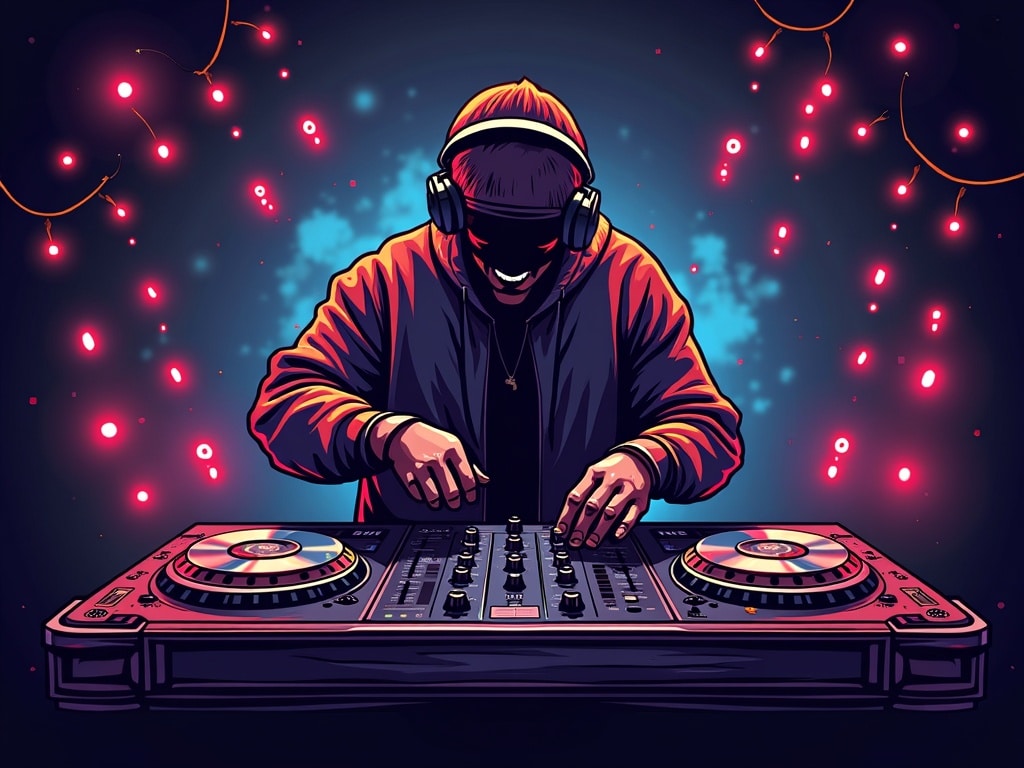
If that’s you right now — sitting at home, learning the basics and wondering how on earth you’ll ever go from mixing alone to playing for a crowd — I’ve been there. And the good news is, it’s 100% possible.
You don’t need connections, fame, or the world’s best gear. You just need time, consistency, and a plan. So, here’s how I did it — and how you can follow the same path.
🎚️ Step 1: Learn the Craft (0–6 months)
Before you even think about clubs or gigs, your main focus should be getting comfortable behind the decks.
When I started, I spent months learning how to beatmatch, blend tracks smoothly, and build a set that flowed. It wasn’t glamorous — it was hours of trial and error, recording terrible mixes, and listening back until I started to hear improvement.
Your first 3–6 months should be all about:
-
Learning the basics — beatmatching, EQ, phrasing, track selection.
-
Understanding your music library — what styles you love and what works together.
-
Practicing recording mixes and listening critically.
👉 If you’re not sure where to start, DJMasteryCourses has the perfect step-by-step training to help you go from total beginner to confident mixer — without the confusion or overwhelm.
🎶 Step 2: Build Your Sound and Confidence (6–12 months)
Once you can mix comfortably, it’s time to start building your sound and confidence.
This is when you really start to find your style — maybe it’s house, drum & bass, tech, or something completely different. Experiment, record, and share.
I started uploading my mixes online — on SoundCloud, Mixcloud, and even Facebook. At first, nobody listened (literally, zero plays). But that’s okay. Every time you post, you’re improving your craft and building a small digital footprint that promoters can find later.
💡 Pro tip:
Create a DJ name early on and start using it everywhere. Post short mix clips, behind-the-scenes shots, or your setup. You’re not just a DJ — you’re building a brand.
🎤 Step 3: Networking and Getting Noticed (12–18 months)
This is where things start to get exciting — and challenging.
Once I’d built a few mixes and some confidence, I started putting myself out there.
I went to local club nights, introduced myself to DJs and promoters, and just… hung out. No pitching, no begging for gigs — just getting to know people.
Eventually, opportunities started to appear — a friend’s house party, a small bar set, then a warm-up slot at a local club.
Here’s the truth:
Your first few gigs probably won’t fall into your lap. You have to show up and be part of the scene.
If promoters and DJs see you supporting events, they’ll remember your name. When a slot opens up, they’ll think of you.
💡 Networking tips that worked for me:
-
Go to events in the genre you love.
-
Introduce yourself to other DJs — compliment their sets.
-
Follow local promoters on Instagram and interact with their posts.
-
Offer to warm up early slots (these are often the easiest way in).
It’s not about who you know — it’s about who knows you’re serious.
🎧 Step 4: Landing That First Gig (18–24 months)
When my first real gig came, it wasn’t a huge festival — it was a small local bar on a Thursday night. But it felt massive to me.
I showed up early, double-checked everything, and played my heart out. The crowd wasn’t huge, but people were dancing. The promoter was happy. That gig led to another, and that one to a residency.
If you’ve put in the work — built your skills, practiced your sets, and made connections — landing your first gig usually comes naturally around the 18–24 month mark. Some do it faster, but remember: slow progress beats no progress.
🧱 Obstacles You’ll Face (and How to Handle Them)
Let’s be real — the journey isn’t always smooth. Here are a few roadblocks you might hit:
-
Self-doubt: You’ll think you’re not good enough. Everyone does. Record your mixes, listen back, and notice your improvements.
-
Rejection: Not every promoter will reply. Keep showing up and being positive — persistence wins.
-
Comparing yourself to others: Focus on your own growth. Every DJ starts somewhere.
-
Technical hiccups: Something will go wrong at a gig. Breathe, smile, and keep the music playing — even if you have to improvise.
Remember: every “problem” is a lesson in disguise.
🌍 Step 5: Keep Growing
Once you’ve played your first gig, don’t stop learning.
Keep refining your skills, experimenting with genres, and connecting with your audience. Post new mixes regularly, collaborate with other DJs, and stay curious about new technology.
The best DJs are always students of the craft — even after years behind the decks.
That’s exactly what we focus on at DJMasteryCourses — helping DJs not just learn, but grow. From beatmatching basics to crowd reading, from mixing to marketing, we give you everything you need to build a lasting career in the industry.
🎓 Final Thoughts
Becoming a DJ isn’t an overnight thing — but it’s one of the most rewarding journeys you’ll ever take.
In just 1–2 years, with consistent practice, a bit of networking, and the right guidance, you can go from mixing in your bedroom to commanding a crowd from the DJ booth.
So don’t wait for “someday.” Start today.
Learn the skills, build your confidence, put yourself out there — and who knows? In a year or two, you might be the one giving this advice to the next generation of DJs.
👉 Ready to start your journey?
Join DJMasteryCourses and learn everything you need — from beatmatching and mixing to branding and marketing — to take your passion from bedroom to booth.
